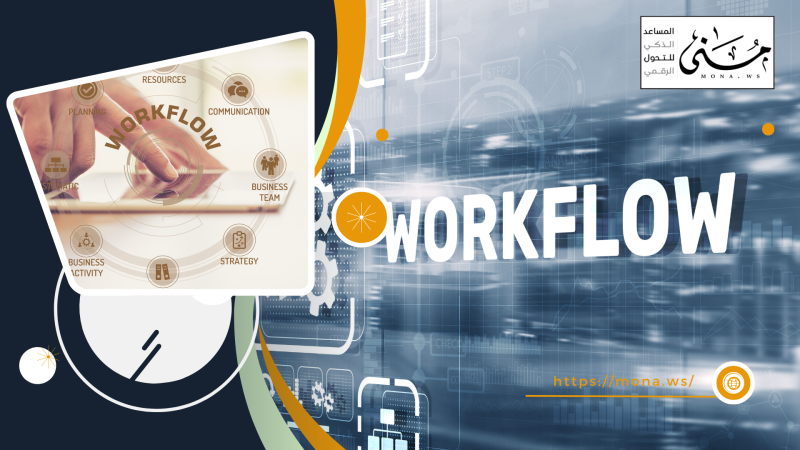At Mona News, we keep pace with the rapid digital transformations reshaping business operations and public services worldwide. As organizations increasingly rely on data for strategic planning, data analytics has become an indispensable pillar for building accurate, reliable, and insightful decision-making processes.
Data is no longer just tables and numbers — it has evolved into a strategic engine that reflects the organization’s real performance, reveals growth opportunities, and enhances operational efficiency.
In this article, we explore the most commonly used types of data analytics and how organizations can benefit from them, with a highlight on one of DocSuite’s powerful capabilities that elevates analytics to a more intelligent level.
📌 1. Descriptive Analytics — “What happened?”
Descriptive analytics is the first and most essential step in any data analytics framework. It answers the fundamental question: “What happened?”
It transforms scattered raw data into clear, organized information that managers can easily understand and use to make initial decisions.
This type of analysis summarizes, aggregates, and organizes data to reveal an accurate picture of the organization’s performance over a specific period — whether in daily operations, financial results, or customer satisfaction levels.
Key outputs include:
-
Monthly number of customers
Helps measure customer growth or decline and analyze the impact of marketing campaigns or service quality. -
Total sales
A direct indicator of financial performance, highlighting peak seasons and top-selling products or services. -
Attendance and time-tracking reports
Allow monitoring employee discipline, evaluating productivity, and linking attendance levels to operational performance. -
Number of reports or complaints
A vital indicator of customer satisfaction and recurring issues that require attention.
🔍 Why is descriptive analytics important?
Because it provides a clear and comprehensive picture of the current state, enabling leaders to:
-
Understand reality accurately
-
Detect recurring patterns
-
Identify strengths
-
Spot early challenges
Once this foundation is built, the organization can confidently move to deeper analytics such as diagnostic, predictive, and prescriptive analysis.
📌 2. Diagnostic Analytics — “Why did it happen?”
If descriptive analytics tells us what happened, diagnostic analytics takes a deeper dive to answer: “Why did it happen?”
This type of analysis uncovers the true causes behind performance changes by examining relationships and correlations in the data. It goes beyond numbers to reveal the story behind the results.
🔍 What does diagnostic analysis do?
It relies on techniques such as time-based comparisons, regression analysis, and tracking operational events to provide logical, cause-based explanations.
It answers questions like:
-
Why did sales drop during a certain period?
Was it due to lower demand, stock shortages, weak marketing, or delayed delivery? -
Why did maintenance costs rise?
Poor preventive maintenance? Lack of spare parts? Repeated failures in a critical asset? -
Why did technical complaints increase in a specific week?
Perhaps due to a system update, unusual user load, or human error in operations.
🎯 Why do organizations need diagnostic analytics?
Because understanding the cause is the basis of the solution.
It helps organizations:
-
Identify root causes instead of treating symptoms
-
Build accurate improvement plans
-
Make fact-driven decisions
-
Prevent repeated failures
-
Improve service and operational quality sustainably
This makes diagnostic analytics essential for shifting from reactive management to proactive, data-driven management.
📌 3. Predictive Analytics — “What is likely to happen next?”
After understanding what happened and why, we move to a more advanced stage: predictive analytics, which answers: “What might happen next?”
This analysis uses AI, machine learning, and statistical models to forecast future events by detecting data patterns and recurring behaviors.
It offers actionable predictions that help organizations plan ahead instead of reacting late.
🔮 What can predictive analytics do?
-
Forecast demand for specific products
Helps manage inventory, prepare for peak seasons, and reduce shortages or excess stock. -
Predict equipment failure times
Enables maintenance teams to schedule preventive maintenance at the ideal time and reduce unexpected downtime. -
Predict customer behavior and trends
Such as purchase likelihood, churn risk, or future interests — improving the accuracy of marketing and service strategies.
🎯 Why is predictive analytics important?
Because it empowers leaders to:
-
Prepare for future events before they happen
-
Make proactive, data-driven decisions
-
Reduce operational and financial risks
-
Optimize resource allocation
-
Strengthen competitiveness with clearer future insights
Thus, predictive analytics becomes a strategic compass that helps organizations stay ahead of change and seize opportunities early.
📌 4. Prescriptive Analytics — “What is the best decision?”
Prescriptive analytics is the most advanced level of data analysis. It not only predicts future outcomes but also answers: “What is the optimal decision?”
Using advanced mathematical models and AI algorithms, this type evaluates all available scenarios and recommends the most efficient course of action.
🎯 Examples of decisions supported by prescriptive analytics:
-
How can we reduce operating costs?
By evaluating multiple resource and workflow scenarios. -
What is the best maintenance plan for critical assets?
By identifying the optimal timing for preventive maintenance. -
Which service channel should we prioritize to improve customer satisfaction?
By analyzing engagement levels, service quality, and response times.
Prescriptive analytics gives organizations the power to choose the best possible path, based on solid data — not guesswork.
🧠 How DocSuite Helps Organizations Analyze Data More Intelligently
One of DocSuite’s most powerful features is its “Reports and Analytics” module— the backbone for any data-driven organization.
It is more than a tool for displaying numbers; it is a complete analytical platform that transforms operational data into strategic insights.
📊 What does DocSuite’s Reports & Analytics feature offer?
-
Real-time reports on daily operations
-
Performance analytics for departments, warehouses, maintenance teams, and service centers
-
Accurate tracking of work order completion times
-
Visibility into spare-parts inventory and consumption patterns
-
Safety and compliance monitoring
-
Interactive dashboards that support instant decision-making
🌟 How do organizations benefit from these capabilities?
-
Detect issues before they occur using predictive insights
-
Improve operational efficiency with clearer visibility
-
Strengthen preventive maintenance and reduce downtime
-
Lower costs through smarter asset and inventory management
-
Enhance service quality with data-driven workflows
With these capabilities, DocSuite becomes far more than a management system — it is a smart engine that powers full digital transformation and enables organizations to make accurate, effective decisions.
⭐ Why Do Organizations Need Data Analytics Today?
-
To make faster, more accurate decisions
-
To improve operational efficiency and reduce waste
-
To understand customer and beneficiary behavior
-
To predict risks and reduce system failures
-
To monitor team performance
-
To enhance service quality in both government and private sectors
In a world where data volume doubles every second, analytics is no longer optional — it is an essential requirement for survival and growth.
✨ Conclusion
Data analytics is not a luxury — it is a strategic necessity.
With the four types of analytics — descriptive, diagnostic, predictive, and prescriptive — organizations today have powerful tools to understand their present and prepare for their future.
And with smart solutions like DocSuite equipped with advanced reporting and analytics capabilities, data becomes a real force for driving better decisions, faster services, and more efficient operations.










Comments
Add New Comment